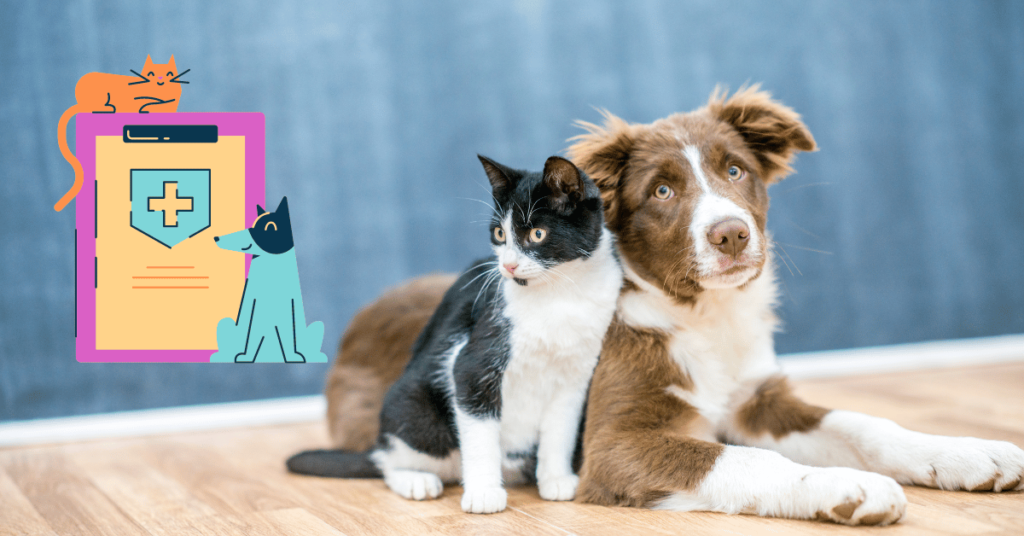Pet insurance is becoming increasingly popular as pet owners seek to protect their furry companions’ health. However, many myths surround the topic, causing confusion and leading to uninformed decisions.
In this article, we’ll debunk 10 common pet insurance myths, providing clarity and helping you make informed choices for your pet’s well-being.
Myth 1: You Can’t Get Pet Insurance for Pre-Existing Conditions
Many believe that if their pet has a pre-existing condition, they won’t be able to get insurance. While most providers do not cover pre-existing conditions, some insurance companies consider certain conditions “curable.” This means that if your pet remains symptom-free for a specific period, typically 6-18 months, the condition may be eligible for coverage again. Additionally, pet insurance will still cover new, unrelated health issues, even if your pet has pre-existing conditions.
Always read the fine print of any policy to understand the specific terms regarding pre-existing conditions.
Myth 2: Pet Insurance Only Works at Certain Vets
Unlike human health insurance, which often requires you to visit network providers, most pet insurance policies allow you to go to any licensed vet, specialist, or emergency clinic. You simply pay the vet upfront and file a claim with your insurer afterward.
There are rare exceptions where specific plans may have restrictions, but for the most part, pet insurance gives you the freedom to choose any vet you trust.
Myth 3: Pet Insurance Coverage Starts Immediately
It’s a common misconception that pet insurance coverage starts as soon as you purchase it. In reality, there’s typically a waiting period that can range from a few days to several weeks. The waiting period is designed to prevent people from signing up for insurance after their pet has already developed a health issue.
To avoid gaps in coverage, it’s best to enroll your pet in insurance early, before any health problems arise.
Myth 4: All Pet Insurance Plans Are the Same
Not all pet insurance plans are created equal. Some policies cover only accidents, while others may include illnesses, surgeries, prescription medications, and even alternative therapies like acupuncture or hydrotherapy. The level of coverage, reimbursement rates, and deductible options also vary from plan to plan.
To find the best plan for your pet, you should compare key details like coverage limits, exclusions, and monthly premiums.
Myth 5: The Cheapest Plan Will Always Be the Cheapest
Many pet owners make the mistake of choosing the lowest-cost plan, thinking it will remain affordable over the years. However, pet insurance premiums can increase as your pet ages, and inflation or rising veterinary costs can drive up premiums as well. What seems like the cheapest plan today might not be the most cost-effective in the long term.
It’s essential to consider not just the current price but the lifetime value of the plan.
Myth 6: Pet Insurance Isn’t Worth the Cost
Some pet owners think that pet insurance is an unnecessary expense. However, one major accident or illness can lead to substantial veterinary bills, which might cost thousands of dollars. Pet insurance can help you manage these unexpected costs, ensuring your pet gets the care they need without causing financial strain.
In many cases, the premiums you pay for pet insurance can be far less than the cost of a single emergency procedure.
Myth 7: Older Pets Can’t Be Insured
It’s commonly believed that only young pets can be insured. While it’s true that premiums may be higher for older pets, many insurance providers offer coverage for senior animals. Older pets are often more prone to health issues, so having insurance can be particularly beneficial for covering those inevitable vet visits.
Some providers even offer policies specifically tailored for older pets, so it’s worth researching your options.
Myth 8: You Don’t Need Insurance for Indoor Pets
Some pet owners think that if their pet stays indoors, they don’t need insurance. While indoor pets are less likely to encounter accidents or injuries, they are still susceptible to illnesses and health issues like cancer, kidney disease, or infections. These conditions can be costly to treat, and having pet insurance ensures you won’t have to make difficult decisions based on cost alone.
Myth 9: Pet Insurance Covers Routine Care
Many pet owners assume that pet insurance will automatically cover routine care such as vaccinations, flea treatments, and annual check-ups. However, standard pet insurance plans typically cover only accidents and illnesses. If you want coverage for routine care, you’ll need to opt for a wellness plan or a policy add-on that includes preventive care.
Myth 10: Filing a Pet Insurance Claim is Complicated
There’s a misconception that filing a claim with pet insurance is a hassle. In fact, most pet insurance companies have simplified their claims processes, allowing you to submit claims online or through mobile apps. You simply pay the vet upfront, file a claim with your insurance provider, and get reimbursed based on the policy terms.
Some companies even offer direct vet payment options, so you won’t have to pay out of pocket before being reimbursed.
Conclusion
Pet insurance can provide peace of mind, ensuring that your pet receives the best care when it’s needed most. By debunking these common myths, we hope you feel more confident about making informed decisions when choosing the right pet insurance for your furry friend. Remember, each pet is unique, and the best plan for your pet will depend on their individual needs and your financial situation.
So that was all about this article. If you have any further questions feel free to comment down below. We are always here to help you!




